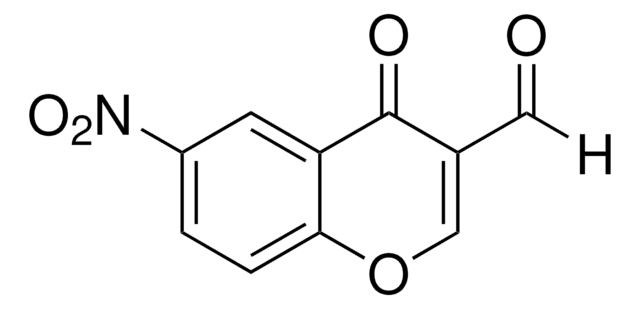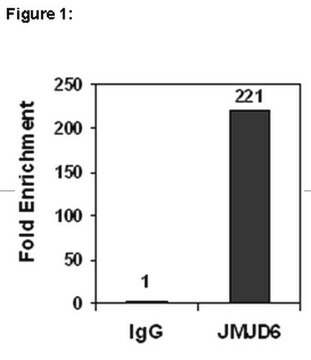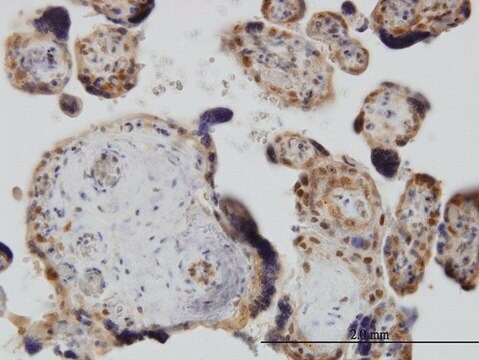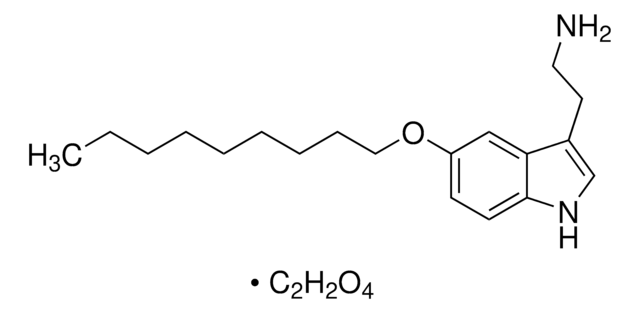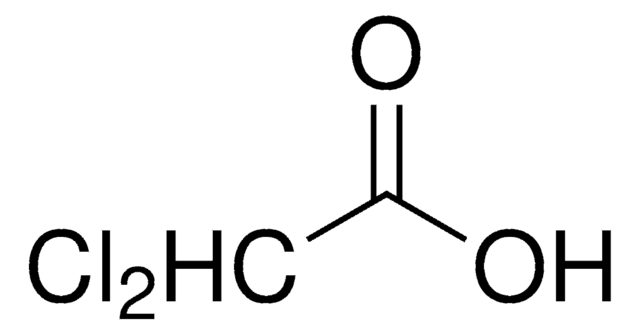17-10262
ChIPAb+ JMJD1C - ChIP Validated Antibody and Primer Set
from rabbit, purified by affinity chromatography
Sinônimo(s):
Chip Antibody and primer set, JMJD ChIP, JMJD, jumonji domain containing 1C, thyroid receptor interacting protein 8, probable JmjC domain-containing histone demethylation protein 2C, thyroid hormone receptor interactor 8, Thyroid receptor-interacting protein 8, Jumonji domain-containing protein, jumonji domain containing 1C ChIP
About This Item
Produtos recomendados
fonte biológica
rabbit
Nível de qualidade
forma do anticorpo
affinity purified immunoglobulin
clone
polyclonal
purificado por
affinity chromatography
reatividade de espécies
human
reatividade da espécie (prevista por homologia)
chimpanzee (based on 100% sequence homology), orangutan (based on 100% sequence homology), rhesus macaque (based on 100% sequence homology), rabbit (based on 100% sequence homology)
fabricante/nome comercial
ChIPAb+
Upstate®
técnica(s)
ChIP: suitable
immunocytochemistry: suitable
western blot: suitable
nº de adesão NCBI
nº de adesão UniProt
Condições de expedição
dry ice
Informações sobre genes
human ... JMJD1C(221037)
Descrição geral
The ChIPAb+JMJD1C set includes the JMJD1C antibody, a Normal Rabbit IgG, and control primers which amplify a 110 bp region of ChIP Primers, human β-globin. The JMJD1C and negative controls are supplied in a scalable "per ChIP" reaction size and can be used to functionally validate the precipitation of JMJD1C -associated chromatin.
Imunogênio
Aplicação
Representative lot data.
Sonicated chromatin prepared from HeLa cells (1 X 10E6 cell equivalents per IP) were subjected to chromatin immunoprecipitation using 1.4 µg of either Normal Rabbit IgG or Anti-JMJD1C and the Magna ChIP® A Kit (Cat. # 17-610). Successful immunoprecipitation of JMJD1C associated DNA fragments was verified by qPCR using ChIP Primers, human β-globin as a positive locus, and β-actin promoter primers as a negative locus. (Figure 2). Data is presented as percent input of each IP sample relative to input chromatin for each amplicon and ChIP sample as indicated.
Please refer to the EZ-Magna ChIP A (Cat. # 17-408) or EZ-ChIP (Cat. # 17-371) protocol for experimental details.
Western Blot Analysis:
Representative lot data.
HeLa nuclear extract was probed with Anti-JMJD1C (1 μg/mL). Proteins were visualized using a Donkey Anti-Rabbit IgG secondary antibody conjugated to HRP and a chemiluminescence detection system.
Arrow indicates JMJD1C (~284 kDa). (Figure 3).
Immunocytochemistry Analysis:
Representative lot data.
Confocal fluorescent analysis of HeLa cells using Anti-JMJD1C (Red). Actin filaments have been labeled with Alexa Fluor 488 dye -Phalloidin (Green). Nucleus is stained with DAPI (Blue). This antibody positively stains the nucleus. (Figure 4).
Epigenetics & Nuclear Function
Histone Modifying Proteins
Embalagem
Qualidade
Representative lot data.
Sonicated chromatin prepared from HeLa cells (1 X 10E6 cell equivalents per IP) were subjected to chromatin immunoprecipitation using 1.4 µg of either Normal Rabbit IgG, or Anti-JMJD1C and the Magna ChIP® A Kit (Cat. # 17-610).
Successful immunoprecipitation of JMJD1C associated DNA fragments was verified by qPCR using ChIP Primers, human β-globin (Figure 1).
Please refer to the EZ-Magna ChIP A (Cat. # 17-408) or EZ-ChIP (Cat. # 17-371) protocol for experimental details.
Descrição-alvo
forma física
Concentration: 0.7 mg/mL
Normal Rabbit IgG. One vial containing 125 µg of Rabbit IgG in 125 µL of storage buffer containing 0.05% sodium azide. Store at -20°C.
ChIP Primers, human β-globin. One vial containing 75 μL of each primer (5 μM) specific for the human β-globin
promoter. Store at -20°C.
FOR: AGG ACA GGT ACG GCT GTC ATC
REV: TTT ATG CCC AGC CCT GGC TC
Armazenamento e estabilidade
Note: Variability in freezer temperatures below -20°C may cause glycerol containing solutions to become frozen during storage.
Nota de análise
Includes normal rabbit IgG and primers specific for human β-globin.
Outras notas
Informações legais
Exoneração de responsabilidade
Código de classe de armazenamento
10 - Combustible liquids
Certificados de análise (COA)
Busque Certificados de análise (COA) digitando o Número do Lote do produto. Os números de lote e remessa podem ser encontrados no rótulo de um produto após a palavra “Lot” ou “Batch”.
Já possui este produto?
Encontre a documentação dos produtos que você adquiriu recentemente na biblioteca de documentos.
Nossa equipe de cientistas tem experiência em todas as áreas de pesquisa, incluindo Life Sciences, ciência de materiais, síntese química, cromatografia, química analítica e muitas outras.
Entre em contato com a assistência técnica
